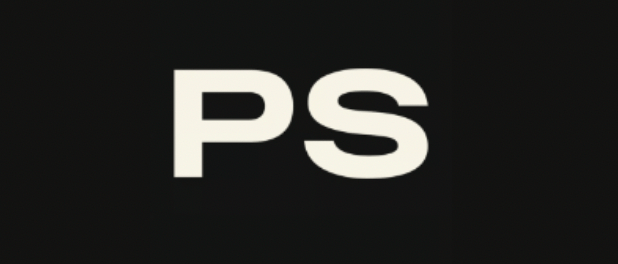- Profit Snack
- Posts
- 💰 The $150M Side Hustle
💰 The $150M Side Hustle

💰 The $150M Side Hustle
Every year, 176 cyclists gear up to compete in the largest bike race in the world.
For 2,200 miles, these cyclists climb 3,865 ft mile-high mountains and reach speeds up to 65 mph.
This is the Tour De France - the most prestigious (and insane) bike race known to man.
In 2020, the race generated an estimated $150M in revenue.
(That’s $50M per week of the race!)
But 120 years ago, the Tour De France was nothing but a publicity stunt to save a failing newspaper.
This is how one man turned his side hustle into a global event, and his secret to capturing the attention of the World.
Here’s what we got for ya:
🐘 Dramatic Demonstrations
🧠 A Thousand Plans. One Goal.
🚴♀️ How The Tour De France Became A $150M Business
Read time: 4 min 49 sec

🐘 Dramatic Demonstrations
In 1902 the French sports newspaper L’Auto struggled to compete with Le Velo, a popular newsletter for French sports.
After 3 years of lawsuits, scandals, and failed publicity stunts, L’Auto needed a miracle…
And that miracle came in early 1903 under the name of Géo Lefèvre, a 26-year-old marketing graduate.

Géo Lefèvre
In a meeting with Henri Desgrange (owner of the L’Auto), Géo Lefèvre pitched his idea for the Tour De France, the largest bike race in the world.
L’Auto would sponsor and report the race. To have the latest updates, readers would have to buy a copy.
Desgrange thought he was crazy, but he had no other ideas to save his newspaper.
So in early 1903, L’Auto announced the race for July 19th, 1903.

The map of the 1st Tour De France
In the first year, L’Auto 3x their newspaper sales.
In 1904, their competitor Le Velo filed for bankruptcy.
By 1933, L’Auto had 2x more readers than the NY Times has today.
This is the power of dramatic demonstration - A crazy stunt that pulls attention from competitors and brings them to you.
Dramatic demonstrations started in 1844 when a guy named PT Barnum walked 21 elephants across the Brooklyn Bridge.
Everyone was scared to cross the bridge, and PT Barnum used it as free advertising for his circus business.
Today, we see the trend with sports brands like Red Bull and events like the Flugtug…
And even with the trending Stanley Cup…
After watching L’Auto’s success, sports newspapers across Europe began to do the same.
There’s the La Vuelta Ciclista a España by the Informaciones…

The final stage of La Vuelta 2023
And the Giro D’Italia by Gazzetta dello Sport…

2020 Giro d'Italia
At the time, L’Auto had less than ¼ of the readers that the Informaciones and Gazzetta dello Sport had.
So why did the Tour De France see more success than either of these races?

Have a business or something you want to promote in front of 65,000+ readers?

Click the button below to apply now!

🧠 A Thousand Plans. One Goal.
As I said, L’Auto was a failing business when they launched the Tour De France.
In fact, they had so few readers that when they initially announced the race, only 15 riders signed up.
So the newspaper had to change plans…
Instead of sponsoring the event, they leveraged the French businesses around them to help cover costs.
To raise money, L’Auto:
#1 - Placed overnight stops on the highest biding cities
Copenhagen paid an estimated $10 million for three days of racing. This year, Bilbao paid $12 million to host the start of the race.

The 2022 and 2023 race route
#2 - Reorganized the bike route to pass by restaurants that donated to the race

#3 - Auctioned sign/banner space along the route to local businesses
(A lot of these tactics are still used today)
Since these businesses only made money if people showed up to watch, they also began to advertise the race…
Something other races did not leverage as they figured their large reader base would be enough.
By the start of the race, 60 riders had entered.

But after WW2, the Tour De France was sold to ASO (Amaury Sport Organisation) who turned the race from a profitable side hustle to a $150M+ business.
Here’s how, and how it changed the race forever.
Why the Tour de France is so brutal - A short video explaining the difficult course and the toll it takes on a competitor’s body.

🚴♀️ How The Tour De France Became A $150M Business
After selling to the ASO, Tour De France revenue doubled the next year.
By 2010, revenue increased by 20x.
What changed?
When L’Auto owned Tour De France, revenue was generated by the surrounding French economy.
But ASO wanted to leverage networks all over the world.
The first thing they did was auction broadcasting rights to global networks. Today, broadcasting rights account for 50% of revenue.
Next, they gave everyone the chance to bid on sponsorships.
At first only tire and bike companies could sponsor the teams. Today, anyone with a few million to spare can sponsor a team and land their brand on a car.

Big changes like this have not only turned the race into a business but also changed how riders compete.
Instead of trying to win, some sponsors pay riders to slow down or ‘break away from the pack’ to increase the media time of their jerseys.
“The entire Tour is about getting eyes on the company on your jersey…If the sponsor isn’t happy and cuts funding, your team is probably sh*t out of luck.” - Anonymous Rider (The Hustle)
Today, the ASO owns the Tour De France, the Giro D’Italia, and La Vuelta Ciclista a España.
Turning them into their own respective businesses as well.

What'd you think of today's edition? |



Reply